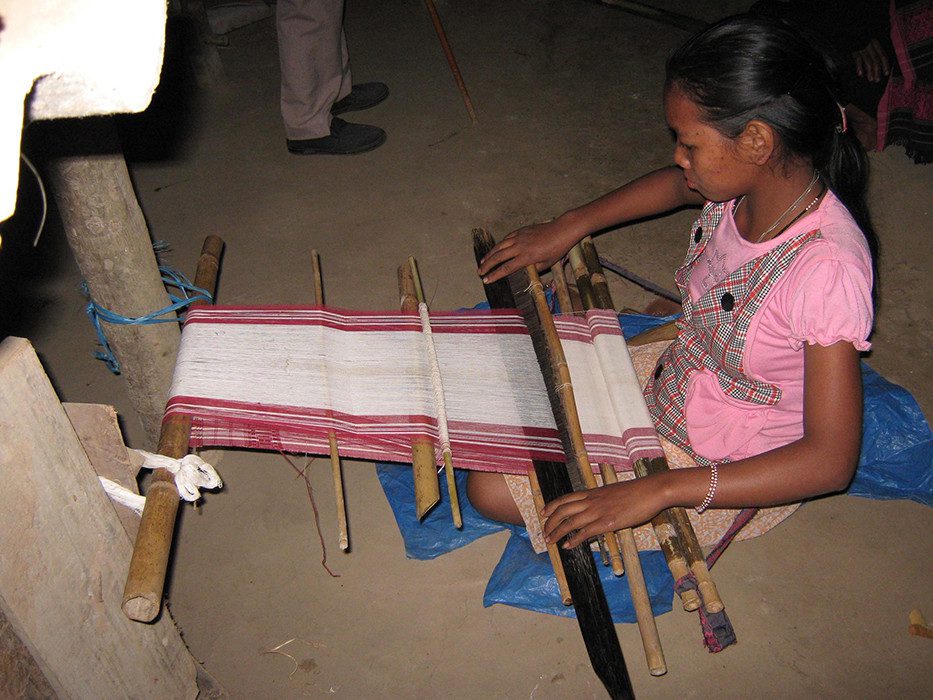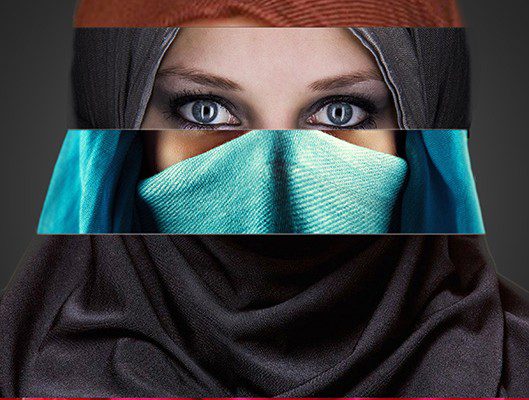The weaves of the Northeast help pass on the world view, epistemology, religious ideologies, and history of the indigenous communities of the region.
Oh, our Mother, the Earth, Oh, our Father, the Sky,
Your children are we, and with tired backs
We bring you the gifts that you love.
Then weave for us a garment of brightness;
May the wrap be the white light of the morning,
May the weft be the red light of evening,
May the fringes be the falling rain,
May the border be the standing rainbow.
Thus weave for us a garment of brightness
That we may walk fittingly where birds sing
That we may walk fittingly where grass is green,
Oh, our Mother, the Earth, Oh, our Father, the Sky!
—Pueblo Indian prayer
Articulating both the individual and the community, weaving is a reflection of world views embedded in mythic time and historical encounters. No wonder that weaving has been an integral part of indigenous communities of Northeast India. In the context of transformations introduced by the forces of globalisation, weaving is representative of indigenous people as agents of change and not merely as objects of change.
The significance of weaving is evident in its pervasive presence in the songs, stories and myths of the community. Each community has a different story to weave around the loom. From ancient times, the innumerous indigenous communities of the Northeast relied on oratory, rhetoric, and storytelling to pass on their world view, epistemology, religious ideologies, and history.
Well known for their oratorical prowess and skill, community storytellers compiled cherished information in allegories, myth, and legends that were routinely recited before the public and also passed down through the fabrics of the community. The perpetuation of any particular indigenous culture, history, and identity depended on the dissemination of this information not only by word of mouth but through the yarns woven by the women of the community, making each retelling a weighty and honorable responsibility, as well as a work of high art.
The significance of weaving is evident in its pervasive presence in the songs, stories and myths of the community. Each community has a different story to weave around the loom.
In many ways, the loom “speaks” and becomes integral to the identity of a community and the weaver. One of the most ancient of art forms, Sophocles writes in The Progeny, “The weavers are striking up the wise shuttle’s song, which wakens those who are asleep.” Greek mythology narrates the story of a weaving contest between Athena and Arachne, whereby Athena transforms Arachne into a spider when she disrespects the Olympian gods. In the Navajo mythology, Spider Woman (half female, half spider) befriends the young, outcaste Kisani woman walking alone in the Prairie and shows her the skills of weaving, the spiritual meaning of the loom, the warp and all the tools. Weaving goddesses are often teachers of wisdom and midwifery. Ixchel, the 16th-century name for the Mayan goddess of weaving and childbirth, was worshipped on the Isla des Mujeres (the Isle of Women) and is often seen with a hare.
Back home, for the indigenous Karbi community from Karbi Anglong, Serdihun is known as the first woman who introduced weaving to the Karbis. Songs from the region narrate how the first jir-ik (a dark blue/black cover for the upper part of a woman’s body) and then the first pe-seleng (a dhoti worn by men and boys) are woven by her with the help of her intricate tools—therang (Karbi backstrap loom), uvek (bamboo sticks for drawing patterns) and ser-langvet (a water container necessary for smoothening of the woven cloth). According to the myth, the tools are still found on the top of the Punja hill near Vothatlangso. To this day, weavers pray to Serdihun as they begin work, so that they may be relieved of any physical pain during the act of weaving. Seleng, choi-ang and poho—the three piece set for men—and pini, pekok and vamkok for women are designed according to the social status and the role played by the individual in the community and the environment.
The Garos in Meghalaya, for instance, use material from indigenously grown trees such as phakram to weave the bark cloth blankets and mattresses called simphak. Cotton pile blankets called gaduk, which also serve as jackets for men, are part of the traditional weaves of the Adi community in the Siang district of Arunachal Pradesh. However, the gaduk is kept undyed in its natural off-white colour. Again, the Ramai motif—an interlocking design—in vibrant yellows is found in the fabric of the Dimasas.
The act of weaving reflects the ideological location of the community vis-à-vis the ecosystem as well. Khasi women work together on their ground looms in the verandahs of their house, using it as a studio space where the sun is a natural source of light.
The act of weaving reflects the ideological location of the community vis-à-vis the ecosystem as well. Khasi women work together on their ground looms in the verandahs of their house, using it as a studio space where the sun is a natural source of light. Ground looms are especially prevalent in the Ri-Bhoi district of Meghalaya.
While the ground loom has been part of the Khasi community, card weaving is in vogue in Arunachal Pradesh among the Monpa women. This process involves the use of square leather cards called mongna and the yarn is passed through the four holes at the corner of the card. As this is a flexible and portable process of weaving, it permits weavers to move around, relocate and be involved in a social group with neighbours and friends during the weaving process. Apatani women in the Subansiri district of Arunachal Pradesh use the pasu yahoo or the bamboo needle, which is very useful to stitch inside traditional skirts.
The Tai Phake community in Assam and Arunachal Pradesh use the backstrap loom, mounted on two bamboo poles and operated with pedals. Communities in Nagaland, on the other hand, use the loin loom and the motifs symptomatic of each clan are represented on woolen garments. The unique gendered characteristic of the loom articulates the different emotional registers of the indigenous community and to replace the same with a motorised loom negates the heterogeneity of the yarns from the Northeast.
White, black, red and blue are the more common colours used in the weaves from the Northeast. The designs may be a series of parallel black and white lines with the identifying motif of the community such as the Jambili Athon of the Karbis or the Buddhist motifs of the Monpas and the Sherdukpens in Arunachal Pradesh.
A simple yet prominent black border runs through the red skirts or galles of the Padams and the Minyongs in Siang district or the black and white skirts of Galong women, worn by them during punong, a traditional dance. The designs on the shawls of the Mishmi women comprise complex geometric patterns such as the rhombus in maroon, green and even pink on a black wrap, outlined by a silver thread.
In recent years, shawls from Nagaland have carried Nagamese motifs as part of a unified Naga identity. For moments of celebration, apparel woven out of the precious muga silk is also in vogue among different communities. The kinds of weaves are dependent upon the socio-economic status of the members of the communities and significantly, weaving takes cognisance of ways of living and of the indigenous peoples’ endeavours in a world being transformed continuously.
The agency of weaving reinstates key indigenous concerns on the interface between oral narratives, creativity and women’s voices. Emblematic of the diversity of the Northeast of India, it offers alternative aesthetics on indigenous concerns for land, language, ecology in the backdrop of bureaucracy, myth and orality.
The agency of weaving reinstates key indigenous concerns on the interface between oral narratives, creativity and women’s voices. Emblematic of the diversity of the Northeast of India, it offers alternative aesthetics on indigenous concerns for land, language, ecology in the backdrop of bureaucracy, myth and orality. Given the context of a history of discrimination and neglect, the transforming weaves from the region offer a panoramic view of indigenous cultures, which challenges theoretical presumptions and moves beyond narrow geographical territories.
The weaves do not contain knowledge; they themselves are the knowledge. Further, by constantly tying their contemporary stories to oral lessons of the past in the traditional art of weaving, the different communities of the Northeast are actively reinforcing and preserving the power of stories as a critical source of tradition and knowledge.















